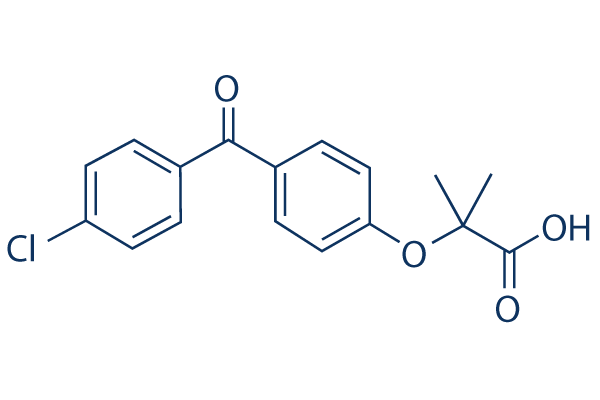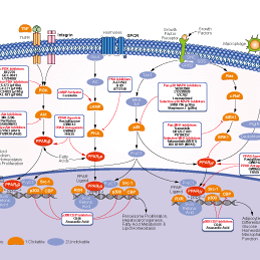
- Bioactive Compounds
- By Signaling Pathways
- PI3K/Akt/mTOR
- Epigenetics
- Methylation
- Immunology & Inflammation
- Protein Tyrosine Kinase
- Angiogenesis
- Apoptosis
- Autophagy
- ER stress & UPR
- JAK/STAT
- MAPK
- Cytoskeletal Signaling
- Cell Cycle
- TGF-beta/Smad
- DNA Damage/DNA Repair
- Compound Libraries
- Popular Compound Libraries
- Customize Library
- Clinical and FDA-approved Related
- Bioactive Compound Libraries
- Inhibitor Related
- Natural Product Related
- Metabolism Related
- Cell Death Related
- By Signaling Pathway
- By Disease
- Anti-infection and Antiviral Related
- Neuronal and Immunology Related
- Fragment and Covalent Related
- FDA-approved Drug Library
- FDA-approved & Passed Phase I Drug Library
- Preclinical/Clinical Compound Library
- Bioactive Compound Library-I
- Bioactive Compound Library-Ⅱ
- Kinase Inhibitor Library
- Express-Pick Library
- Natural Product Library
- Human Endogenous Metabolite Compound Library
- Alkaloid Compound LibraryNew
- Angiogenesis Related compound Library
- Anti-Aging Compound Library
- Anti-alzheimer Disease Compound Library
- Antibiotics compound Library
- Anti-cancer Compound Library
- Anti-cancer Compound Library-Ⅱ
- Anti-cancer Metabolism Compound Library
- Anti-Cardiovascular Disease Compound Library
- Anti-diabetic Compound Library
- Anti-infection Compound Library
- Antioxidant Compound Library
- Anti-parasitic Compound Library
- Antiviral Compound Library
- Apoptosis Compound Library
- Autophagy Compound Library
- Calcium Channel Blocker LibraryNew
- Cambridge Cancer Compound Library
- Carbohydrate Metabolism Compound LibraryNew
- Cell Cycle compound library
- CNS-Penetrant Compound Library
- Covalent Inhibitor Library
- Cytokine Inhibitor LibraryNew
- Cytoskeletal Signaling Pathway Compound Library
- DNA Damage/DNA Repair compound Library
- Drug-like Compound Library
- Endoplasmic Reticulum Stress Compound Library
- Epigenetics Compound Library
- Exosome Secretion Related Compound LibraryNew
- FDA-approved Anticancer Drug LibraryNew
- Ferroptosis Compound Library
- Flavonoid Compound Library
- Fragment Library
- Glutamine Metabolism Compound Library
- Glycolysis Compound Library
- GPCR Compound Library
- Gut Microbial Metabolite Library
- HIF-1 Signaling Pathway Compound Library
- Highly Selective Inhibitor Library
- Histone modification compound library
- HTS Library for Drug Discovery
- Human Hormone Related Compound LibraryNew
- Human Transcription Factor Compound LibraryNew
- Immunology/Inflammation Compound Library
- Inhibitor Library
- Ion Channel Ligand Library
- JAK/STAT compound library
- Lipid Metabolism Compound LibraryNew
- Macrocyclic Compound Library
- MAPK Inhibitor Library
- Medicine Food Homology Compound Library
- Metabolism Compound Library
- Methylation Compound Library
- Mouse Metabolite Compound LibraryNew
- Natural Organic Compound Library
- Neuronal Signaling Compound Library
- NF-κB Signaling Compound Library
- Nucleoside Analogue Library
- Obesity Compound Library
- Oxidative Stress Compound LibraryNew
- Plant Extract Library
- Phenotypic Screening Library
- PI3K/Akt Inhibitor Library
- Protease Inhibitor Library
- Protein-protein Interaction Inhibitor Library
- Pyroptosis Compound Library
- Small Molecule Immuno-Oncology Compound Library
- Mitochondria-Targeted Compound LibraryNew
- Stem Cell Differentiation Compound LibraryNew
- Stem Cell Signaling Compound Library
- Natural Phenol Compound LibraryNew
- Natural Terpenoid Compound LibraryNew
- TGF-beta/Smad compound library
- Traditional Chinese Medicine Library
- Tyrosine Kinase Inhibitor Library
- Ubiquitination Compound Library
-
Cherry Picking
You can personalize your library with chemicals from within Selleck's inventory. Build the right library for your research endeavors by choosing from compounds in all of our available libraries.
Please contact us at info@selleckchem.com to customize your library.
You could select:
- Antibodies
- Bioreagents
- qPCR
- 2x SYBR Green qPCR Master Mix
- 2x SYBR Green qPCR Master Mix(Low ROX)
- 2x SYBR Green qPCR Master Mix(High ROX)
- Protein Assay
- Protein A/G Magnetic Beads for IP
- Anti-Flag magnetic beads
- Anti-Flag Affinity Gel
- Anti-Myc magnetic beads
- Anti-HA magnetic beads
- Poly DYKDDDDK Tag Peptide lyophilized powder
- Protease Inhibitor Cocktail
- Protease Inhibitor Cocktail (EDTA-Free, 100X in DMSO)
- Phosphatase Inhibitor Cocktail (2 Tubes, 100X)
- Cell Biology
- Cell Counting Kit-8 (CCK-8)
- Animal Experiment
- Mouse Direct PCR Kit (For Genotyping)
- New Products
- Contact Us
research use only
Fenofibric acid PPAR inhibitor
Fenofibric acid (NSC 281318, Trilipix, FNF acid) is a fibrate that acts as a lipid-lowering agent, decreasing low-density lipoprotein cholesterol and triglycerides.

Chemical Structure
Molecular Weight: 318.75
Purity & Quality Control
Batch:
Purity:
99.95%
99.95
Related Products
| Related Targets | PPARα PPARβ/δ PPARγ PPARδ | Click to Expand |
|---|---|---|
| Related Products | T0070907 GW9662 GW6471 WY-14643 (Pirinixic Acid) GSK3787 GW0742 AZ6102 Astaxanthin Eupatilin GSK0660 Oroxin A Harmine Palmitoylethanolamide Lanifibranor (IVA-337) DG172 dihydrochloride Glabridin Ciprofibrate Clofibric Acid Alpinetin Elafibranor | Click to Expand |
| Related Compound Libraries | Metabolism Compound Library Anti-cancer Metabolism Compound Library Glutamine Metabolism Compound Library Carbohydrate Metabolism Compound Library Lipid Metabolism Compound Library | Click to Expand |
Signaling Pathway
Mechanism of Action
| Targets |
|
|---|
In vitro |
||||
| In vitro | Fibric acids, active forms of fibrate drugs and activators of peroxisome proliferator-activated receptor-alpha (PPARα), are also known for an HDL-raising effect. Fibric acids enhance fatty acid catabolism and accordingly reduce plasma lipid level, predominantly triglyceride (TG). Fenofibric acid increases the expression of ABCA1 and apoA-I–mediated HDL production. The effect on ABCA1 expression was through the enhancement of the transcription of the ABCA1 gene being dependent on LXR[1]. | |||
|---|---|---|---|---|
| Cell Research | Cell lines | RAW264 cells; THP-1 cells | ||
| Concentrations | 0-200 μmol/L | |||
| Incubation Time | 48 h | |||
| Method | PPAR activators fenofibric acid is dissolved in DMSO and added to the culture medium containing 0.2% BSA. RAW264 cells are washed with PBS and cultured an additional 48 hours in the presence of this compound in DMEM/F-12(1:1) medium containing 2% TCM and 0.2% BSA. During the last 24 hours of the drug treatment, 300 mol/L of dibutyryl cAMP and apoA-I (10 μg/mL) are added to the medium. THP-1 cells are also treated with this compound and apoA-I in 0.2% BSA-RPMI 1640 medium and 0.1% BSA-MEM. Cholesterol and choline-phospholipid released into the medium by apoA-I are determined enzymatically. Adherent cells are dissolved in 0.1 N NaOH for protein determination by bicinchoninic acid protein assay system. |
|||
In Vivo |
||
| In vivo | Fenofibric acid attenuates aberrant increases of circulating EPC(Endothelial Progenitor Cells) in OIR mice. Inhibitory effect of this compound on EPC mobilization in the OIR model is PPARα-dependent. It inhibits hypoxia-induced retinal EPC increase in a PPARα-dependent manner. This chemical decreases CXCR4-positive EPC in the circulation, downregulates the serum SDF-1 level and suppresses HIF-1a and SDF-1 overexpression in the retina[1]. | |
|---|---|---|
| Animal Research | Animal Models | C57BL/6J; PPARa-/- mice |
| Dosages | 10 mg/kg | |
| Administration | i.p. | |
| NCT Number | Recruitment | Conditions | Sponsor/Collaborators | Start Date | Phases |
|---|---|---|---|---|---|
| NCT03382756 | Completed | Dyslipidemias |
Chong Kun Dang Pharmaceutical |
October 12 2017 | Phase 1 |
| NCT03515213 | Completed | Huntington Disease |
University of California Irvine |
April 27 2017 | Phase 2 |
| NCT02891408 | Completed | Nonalcoholic Steatohepatitis (NASH) |
Gilead Sciences |
September 23 2016 | Phase 1 |
| NCT02651753 | Completed | Dyslipidemia |
Chong Kun Dang Pharmaceutical |
January 2016 | Phase 1 |
| NCT02422030 | Completed | Healthy |
Chong Kun Dang Pharmaceutical |
March 17 2015 | Phase 1 |
References |
|
Chemical Information
| Molecular Weight | 318.75 | Formula | C17H15ClO4 |
| CAS No. | 42017-89-0 | SDF | Download SDF |
| Synonyms | NSC 281318, Trilipix, FNF acid | ||
| Smiles | CC(C)(C(=O)O)OC1=CC=C(C=C1)C(=O)C2=CC=C(C=C2)Cl | ||
Storage and Stability
| Storage (From the date of receipt) | |||
|
In vitro |
DMSO : 64 mg/mL ( (200.78 mM) Moisture-absorbing DMSO reduces solubility. Please use fresh DMSO.) Water : Insoluble Ethanol : Insoluble |
Molecular Weight Calculator |
|
In vivo Add solvents to the product individually and in order. |
In vivo Formulation Calculator |
|||||
Preparing Stock Solutions
Molarity Calculator
In vivo Formulation Calculator (Clear solution)
Step 1: Enter information below (Recommended: An additional animal making an allowance for loss during the experiment)
mg/kg
g
μL
Step 2: Enter the in vivo formulation (This is only the calculator, not formulation. Please contact us first if there is no in vivo formulation at the solubility Section.)
% DMSO
%
% Tween 80
% ddH2O
%DMSO
%
Calculation results:
Working concentration: mg/ml;
Method for preparing DMSO master liquid: mg drug pre-dissolved in μL DMSO ( Master liquid concentration mg/mL, Please contact us first if the concentration exceeds the DMSO solubility of the batch of drug. )
Method for preparing in vivo formulation: Take μL DMSO master liquid, next addμL PEG300, mix and clarify, next addμL Tween 80, mix and clarify, next add μL ddH2O, mix and clarify.
Method for preparing in vivo formulation: Take μL DMSO master liquid, next add μL Corn oil, mix and clarify.
Note: 1. Please make sure the liquid is clear before adding the next solvent.
2. Be sure to add the solvent(s) in order. You must ensure that the solution obtained, in the previous addition, is a clear solution before proceeding to add the next solvent. Physical methods such
as vortex, ultrasound or hot water bath can be used to aid dissolving.
Tech Support
Answers to questions you may have can be found in the inhibitor handling instructions. Topics include how to prepare stock solutions, how to store inhibitors, and issues that need special attention for cell-based assays and animal experiments.
Tel: +1-832-582-8158 Ext:3
If you have any other enquiries, please leave a message.
* Indicates a Required Field






































